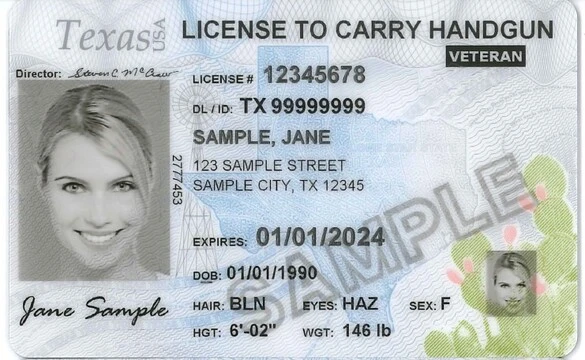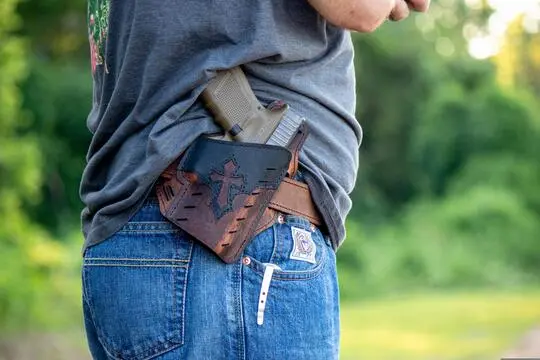In a world that is increasingly unpredictable, the ability to be aware of one's surroundings and understand potential threats is not just a skill, but a necessity. This is where situational awareness comes into play. It is a key component of self-defense, allowing individuals to be prepared for unexpected situations. But what exactly is situational awareness, and how can it be applied in the context of License to Carry (LTC) training?
Understanding Situational Awareness
The Role of Sensory Perception
Situational awareness begins with sensory perception. It is based on your ability to use your senses of seeing, hearing, smelling, tasting, and feeling touch. Your senses need to perceive what's happening around you, allowing you to gather crucial information about your environment.
The 4 Stages of Situational Awareness
Situational awareness can be broken down into four stages:
- Perception: The first step is to perceive the elements in the environment. This involves using your senses to gather information.
- Comprehension: The next step is to understand the situation based on the information gathered.
- Projection: This involves determining how the situation will evolve based on the current status and trends.
- Decision: Finally, you make decisions based on your understanding and projection of the situation.
The 5 Elements of Situational Awareness
There are five key elements of situational awareness:
- Environmental Scanning: Regularly scanning your environment for potential threats.
- Sensory Perception: Using all your senses to gather information.
- Situation Comprehension: Understanding what the gathered information means.
- Threat Assessment: Identifying potential threats based on the information.
- Decision Making: Making informed decisions based on your threat assessment.
Improving Your Situational Awareness
Techniques and Strategies
Improving situational awareness involves regular practice and conscious effort. Techniques include regular environmental scanning, practicing mindfulness, and engaging in exercises that enhance sensory perception. It also involves learning to trust your instincts. Often, our subconscious mind picks up on threats before our conscious mind does.
Examples of Being Situationally Aware
Being situationally aware can be as simple as noticing a car that has been following you for several blocks, or a person who seems out of place in a certain environment. It could also involve noticing details such as an unattended bag in a public place, or a door that is ajar when it should be closed.
Threat Recognition and Situational Control
Identifying Potential Threats
Identifying potential threats is a crucial aspect of situational awareness. This involves recognizing aberrant behavior, out-of-place clothing, or anything that seems unusual or out of the ordinary. It's important to note that not everything unusual is a threat, but it's worth paying attention to.
Controlling the Situation
Once a potential threat is identified, the next step is to control the situation. This could mean creating distance between yourself and the potential threat, alerting authorities, or preparing to defend yourself if necessary. The goal is to provide yourself with crucial time for preparation and reaction in self-defense scenarios.
A Self-Defense Guide to Situational Awareness
Practical Applications of Situational Awareness in Self-Defense
Situational awareness is not just about identifying threats, but also about knowing how to react appropriately. For example, if you notice someone following you, a practical application of situational awareness could be to cross the street or enter a populated building, rather than leading the potential threat to a secluded area.
Case Studies
Consider the case of a woman who noticed a man following her while she was walking home late at night. By being aware of her surroundings, she was able to recognize the potential threat. She quickly entered a nearby store and alerted the storekeeper, who called the police. Her situational awareness allowed her to avoid a potentially dangerous situation.
Breaking Down Situational Awareness
Understanding Cognitive Biases
Cognitive biases can affect our situational awareness. For example, confirmation bias can lead us to interpret situations based on our pre-existing beliefs, potentially causing us to overlook real threats. It's important to acknowledge these biases and strive to minimize their impact to ensure accurate assessments.
Fair Judgement and Threat Assessment
While it's important to be vigilant, it's equally important to avoid unfairly targeting or misjudging individuals based on appearances. Time and ongoing observation are essential in distinguishing genuine threats from perceived ones. It's crucial to avoid overgeneralizing or disproportionately attributing significance to certain behaviors when assessing suspicious behavior.
Situational Awareness in LTC Training
Being Mentally Prepared for LTC
In the context of License to Carry (LTC) training, situational awareness is a vital skill. It's not just about knowing how to use a firearm; it's also about understanding when and how to react to potential threats. Being mentally prepared involves understanding the responsibility that comes with carrying a firearm and being ready to make split-second decisions when necessary.
Certified Situation Awareness Specialist in LTC Training
Becoming a Certified Situation Awareness Specialist can enhance your LTC training. This certification provides in-depth knowledge and skills in situational awareness, preparing you to handle a wide range of scenarios. It's not just about recognizing threats, but also about understanding human behavior, decision-making processes, and effective communication.
Enhancing EMS Situational Awareness in LTC
Emergency Medical Services (EMS) situational awareness is another aspect that can be enhanced in LTC training. This involves understanding the medical implications of self-defense situations, such as recognizing signs of shock or trauma, and knowing how to provide first aid or other immediate care.
Advanced Situational Awareness in LTC Training
Advanced situational awareness training takes these skills to the next level. This could involve scenario-based training, where you're placed in simulated situations that test your situational awareness and decision-making skills. The goal is to prepare you for real-world situations and ensure that you can react appropriately under pressure.
Conclusion
Situational awareness is a powerful tool in self-defense and an essential skill for anyone involved in LTC training. It's about more than just recognizing threats; it's about understanding your environment, making informed decisions, and being prepared to react appropriately. By enhancing your situational awareness, you can increase your personal safety and the safety of those around you.




